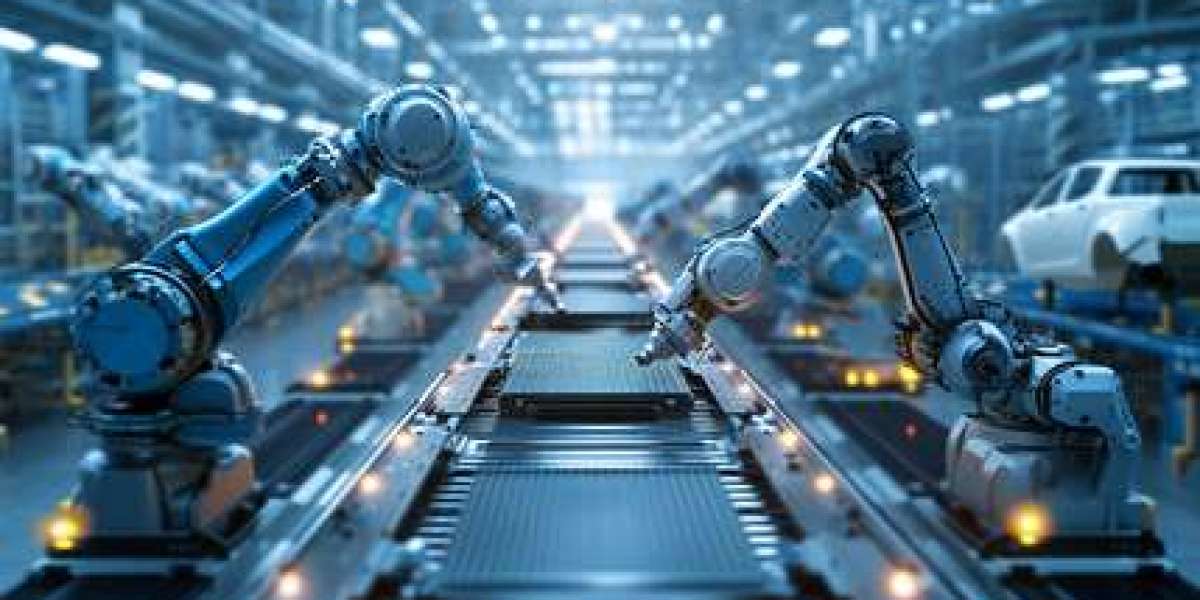Efficiency Redefined: Streamlining Operations with Industrial Robotics
Introduction
Welcome to the future of efficiency – Industrial robotics have redefined the way operations are streamlined in manufacturing, offering unparalleled precision, speed, and reliability. In this article, we delve into how industrial robotics are reshaping operations and revolutionizing the manufacturing landscape.
Outline
- Understanding Industrial Robotics
- The Role of Robotics in Streamlining Operations
- Technological Advancements
- Benefits of Efficiency Enhancement
- Challenges and Considerations
- Conclusion
- FAQs
Background
Understanding Industrial Robotics: Industrial robotics involves the use of automated systems and machinery to perform tasks traditionally carried out by humans in manufacturing settings. These robots are equipped with advanced sensors, actuators, and control mechanisms, enabling precise and efficient operations.
The Role of Robotics in Streamlining Operations
Discover how industrial robotics streamline operations:
- Automation of Repetitive Tasks: Industrial robots excel in repetitive tasks such as assembly, welding, and packaging, reducing human labor and cycle times.
- Increased Precision and Accuracy: Robotics ensure consistent and precise results, minimizing errors and defects in manufactured products.
- Enhanced Speed and Throughput: Industrial robots operate at high speeds, leading to increased throughput and production efficiency.
- 24/7 Operation: Robots can operate round-the-clock, maximizing productivity and minimizing downtime in manufacturing processes.
Technological Advancements
Explore the technological advancements driving industrial robotics:
- Artificial Intelligence (AI): AI-powered robotics enable autonomous decision-making and adaptive behavior, enhancing efficiency and adaptability in manufacturing tasks.
- Collaborative Robots (Cobots): Cobots work alongside humans, promoting collaboration and enhancing safety in tasks such as assembly and quality control.
- Advanced Sensing and Perception: Robotics equipped with advanced sensors and perception technologies excel in tasks such as object recognition and tracking, enabling complex manipulation tasks.
- Cloud Robotics: Cloud-connected robotics leverage cloud computing resources for real-time monitoring, analysis, and optimization of manufacturing processes.
Benefits of Efficiency Enhancement
Delve into the benefits offered by efficiency enhancement through industrial robotics:
- Improved Productivity: Industrial robotics enhance productivity by optimizing production processes, reducing cycle times, and increasing throughput.
- Enhanced Quality: Robotics ensure consistent quality by minimizing errors and defects in manufactured products, leading to higher customer satisfaction.
- Cost Savings: Efficiency improvements result in cost savings through reduced labor costs, decreased waste, and improved resource utilization.
- Safety and Ergonomics: Collaborative robots enhance workplace safety by performing dangerous or repetitive tasks, reducing the risk of accidents and injuries to human workers.
Challenges and Considerations
Despite the benefits, industrial robotics pose challenges:
- Initial Investment: Implementing industrial robotics requires a significant initial investment in equipment, infrastructure, and training.
- Integration Complexity: Integrating robotics with existing manufacturing systems may be complex and require specialized expertise.
- Workforce Training: Employees may require training to operate and collaborate with robots, necessitating investment in skill development programs.
- Maintenance and Support: Robotics systems require regular maintenance and support to ensure optimal performance and uptime.
Conclusion
In conclusion, industrial robotics have redefined efficiency in manufacturing, offering unparalleled precision, speed, and reliability. By embracing technological advancements and addressing challenges, industries can unlock new levels of productivity and competitiveness.
FAQs
Q: What are industrial robotics? A: Industrial robotics involves the use of automated systems and machinery to perform tasks in manufacturing settings, enhancing efficiency and productivity.
Q: What are the benefits of efficiency enhancement through industrial robotics? A: Efficiency enhancement through industrial robotics offers benefits such as improved productivity, enhanced quality, cost savings, and improved safety in manufacturing operations.
Q: What are the challenges associated with industrial robotics? A: Challenges associated with industrial robotics include the initial investment required, integration complexity, workforce training, and maintenance and support requirements.



